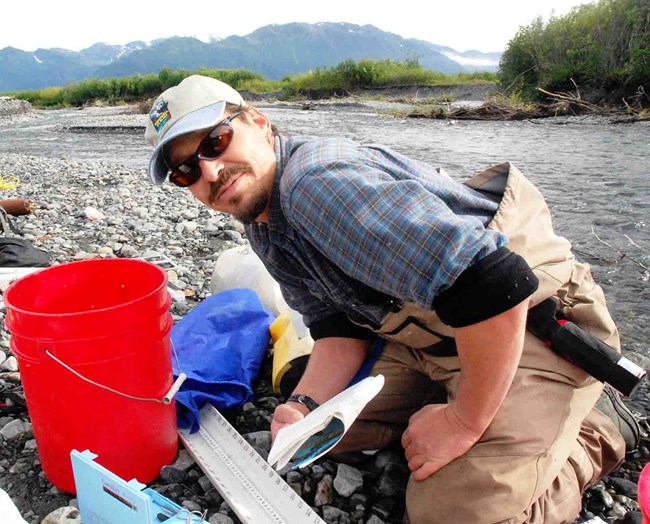
Streams and rivers are vital components of Central Alaska ecosystems, constantly reshaping the landscape and creating a diverse array of landforms and habitats that are important for both terrestrial and aquatic species. These changes can be either gradual, like the slow growth of a river delta, or dramatic, like the destruction of riparian forests during a large flood. The end result of these processes is a dynamic mosaic of habitats that increases the diversity of terrestrial vegetation and wildlife. To monitor ecological change in streams and rivers, the Central Alaska Network uses a wide variety of information. This includes biological, chemical, and physical measurements collected during field visits, and data derived from satellite and airborne instrumentation. Data are collected each year from a small number of easily accessed sentinel streams in each park, as well as from a large number of remote streams that are visited only once every 10 years or so. At each stream, network scientists collect data on the species composition and abundance of aquatic insects and diatom and fish communities. Because these organisms are in the streams year-round, their responses to the stream environment serve as biological indicators of ecological change that scientists may not be able to detect when collecting other types of data. Detailed chemical and physical information about each stream is collected as well. By combining these various types of information, scientists will be able to detect changes in how stream ecosystems are behaving, not just at the small percentage of streams that are being studied, but across all 21 million acres of the vast and remote Central Alaska Network. Stream monitoring goals include:
We monitor streams and rivers in all Central Alaska Network parklands. Contact: Trey Simmons Learn more |
Last updated: January 30, 2019
